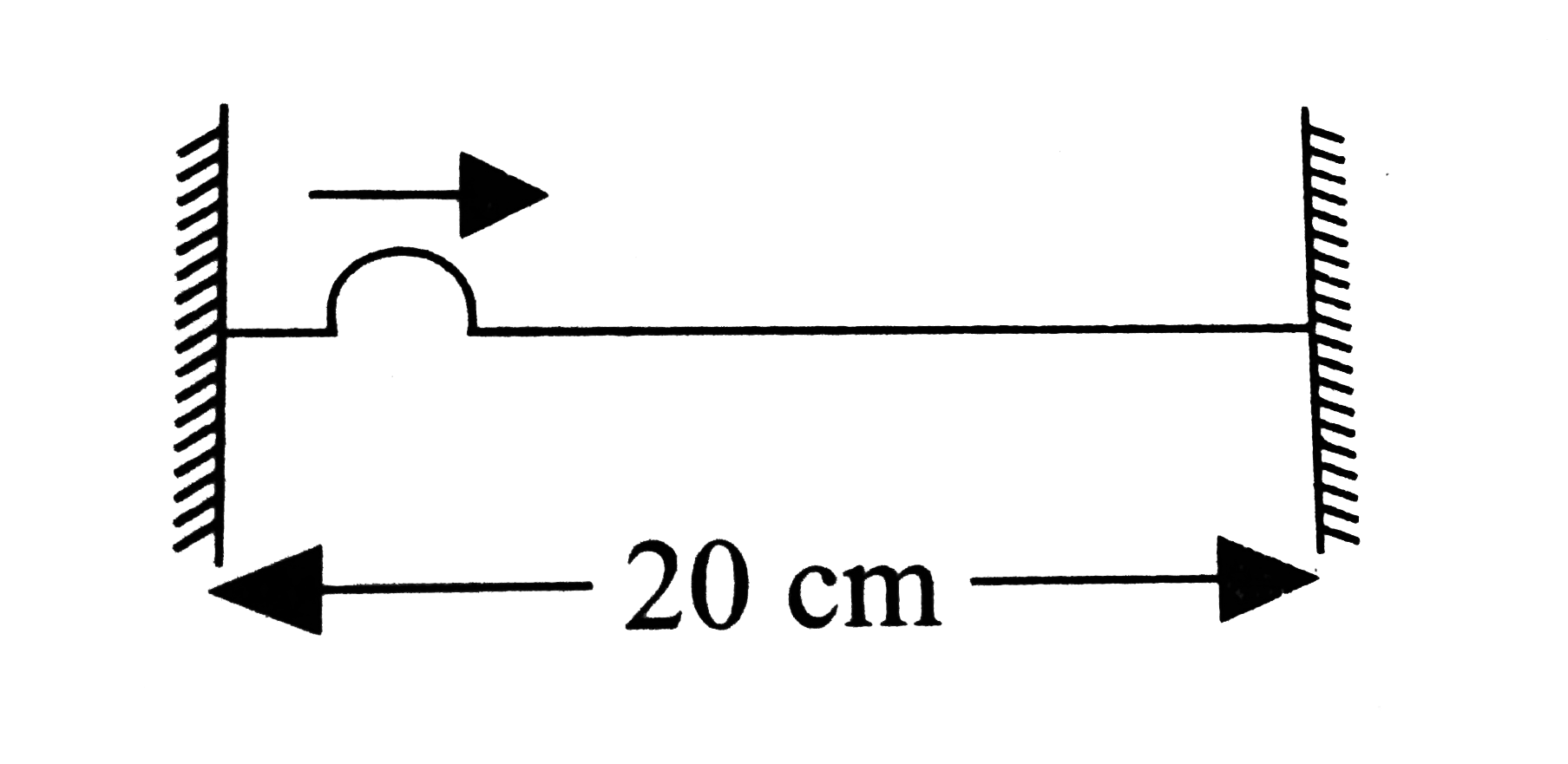A string of length 0.4m and mass 10−2kg is tightly clamped at its ends. The tension in the string is 1.6N. Identical wave pulses are produced at one end at equal intervals of time, Δt. The minimum value of Δt which allows constructive interference of successive pulse is
0.05 s
0.10 s
0.20 s
0.40 s
The correct Answer is:B
Step by step video, text & image solution for A string of length 0.4 m and mass 10^(-2)kg is tightly clamped at its ends. The tension in the string is 1.6 N. Identical wave pulses are produced at one end at equal intervals of time, Deltat. The minimum value of Deltat which allows constructive interference of successive pulse is by Physics experts to help you in doubts & scoring excellent marks in Class 11 exams.
Topper's Solved these Questions
- BOOK - DC PANDEYCHAPTER - WAVE MOTIONEXERCISE - More Than One Option is Correct23videos
WAVE MOTION
- BOOK - DC PANDEYCHAPTER - WAVE MOTIONEXERCISE - Comprehion Type Questions19videos
WAVE MOTION
- BOOK - DC PANDEYCHAPTER - WAVE MOTIONEXERCISE - JEE MAINS50videos
WAVE MOTION
- BOOK - DC PANDEYCHAPTER - VECTORSEXERCISE - Medical enrances gallery9videos
VECTORS
- BOOK - DC PANDEYCHAPTER - WORK, ENERGY & POWEREXERCISE - Level 2 Comprehension Based2videos
WORK, ENERGY & POWER
Similar Questions
A string of length 20 cm and linear mass density 0.40gcm−1 is fixed at both ends and is kept under a tension of 16 N. A wave pulse is produced at t = 0 near an end as shown in figure, which travels towards the other end. (a) When will the string have the shape shown in the figure again ? (b) Sketch the shape of the string at a time half of that found in part (a).
 View Solution
View SolutionA string of length 20cm and linear mass density 0.40g/cm is fixed at both ends and is kept under a tension of 16N.A wave pulse is produced at t=0 near an end as shown in figure which travels towards the other end.
when will the string have the shape shown in the figure again? (in ×10−2s)
 View Solution
View Solution
Knowledge Check
- Question 1 - Select One
A string of length 0.4m and mass 10−2kg is tightly clamped at its ends. The tension in the dtring is 1.6N. Idential wave pulse are produced at one end at equal intervals of time, Δt. The minimum value of Δt which allows constructive inetrference successive pulse is
A(a) 0.04sB(b)0.10sC( c ) 0.20sD(d) 0.40s - Question 2 - Select One
A string of length 0.4m and mass 10−2kg is clamped at one end . The tension in the string is 1.6N. The identical wave pulses are generated at the free end after regular interval of time , Δt . The minimum value of Δt , so that a constructive interference takes place between successive pulses is
A0.1sB0.05sC0.2sDconstructive interference cannot take place - Question 3 - Select One
A string of length 0.4 m and mass 10−2 kg is clamped at its ends. The tension in the string is 1.6 N. When a pulse travels along the string the shape of the string is found to be the same at times t and t+△t. The value △t is
A0.05sB0.1sC0.2sD0.4s
A string of length L and mass M is lying on a horizontal table. A force F is applied at one of its ends. Tension in the string at a distance x from the end at which force is applied is
View SolutionA string of length L and mass M is lying on a horizontal table. A force F is applied at one of its ends. Tension in the string at a distance x from the end at which force is applied is
View SolutionA string of length 10.0 m and mass 1.25kg stretched with a tension of 50N. If a transverse pulse is created at one end of the string, how long does it take to reach the other end ?
View SolutionA string of mass per unit length μ=6×10−3 kg/m is fixed at both ends under the tension 540 N. If the string is in resonance with consecutive frequencies 420 Hz and 490 Hz. Then find the length of the string?
View SolutionA mass of 5 kg is tied to a string of length 1.0 m and is rotated in vertical circle with a uniform speed of 4m/s . The tension in the string will be 130 N when the mass is at (g= 10m/s2)
View Solution

